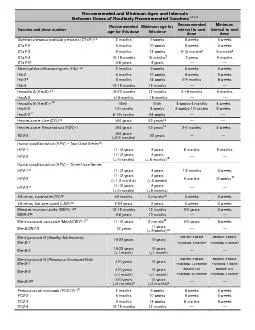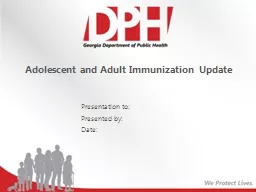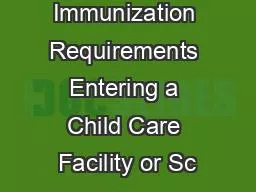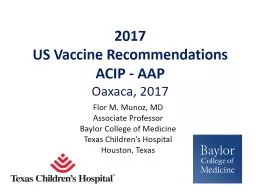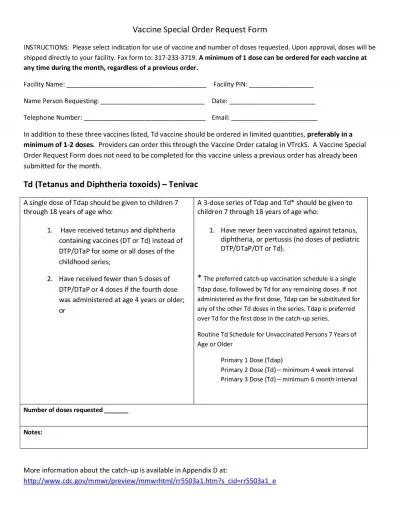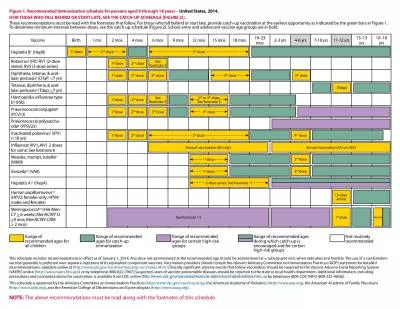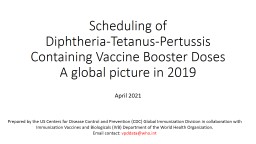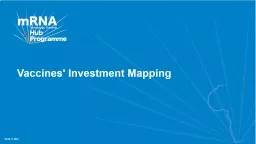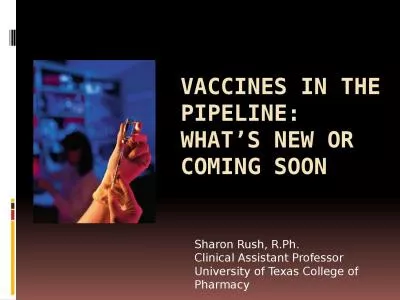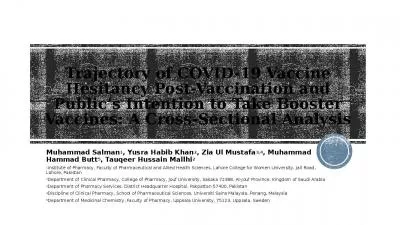PDF-Recommended and Minimum Ages a nd Intervals Between Doses of Routinely Recommended Vaccines
Author : liane-varnes | Published Date : 2014-10-27
Use of licensed combination vaccines is generally preferred to separate injections of the ir equivalent component vaccines When administering combination vaccines
Presentation Embed Code
Download Presentation
Download Presentation The PPT/PDF document "Recommended and Minimum Ages a nd Interv..." is the property of its rightful owner. Permission is granted to download and print the materials on this website for personal, non-commercial use only, and to display it on your personal computer provided you do not modify the materials and that you retain all copyright notices contained in the materials. By downloading content from our website, you accept the terms of this agreement.
Recommended and Minimum Ages a nd Intervals Between Doses of Routinely Recommended Vaccines: Transcript
Download Rules Of Document
"Recommended and Minimum Ages a nd Intervals Between Doses of Routinely Recommended Vaccines"The content belongs to its owner. You may download and print it for personal use, without modification, and keep all copyright notices. By downloading, you agree to these terms.
Related Documents

